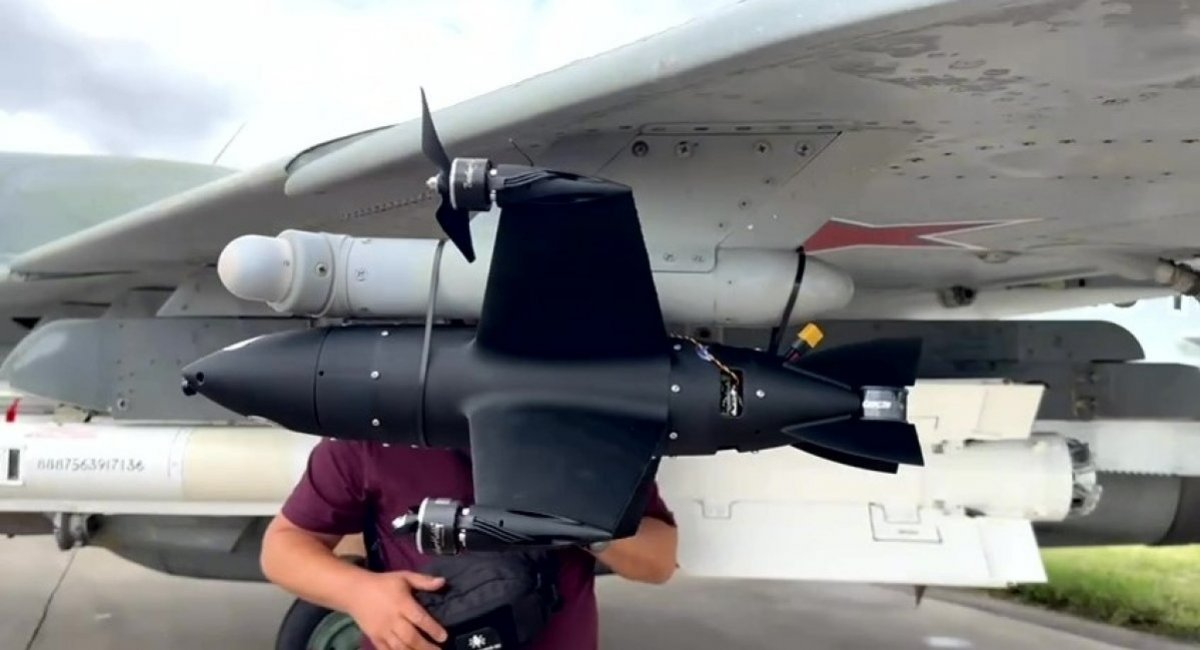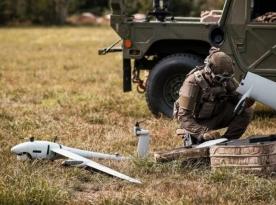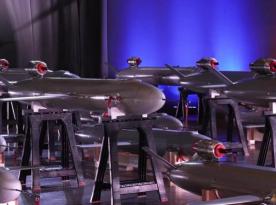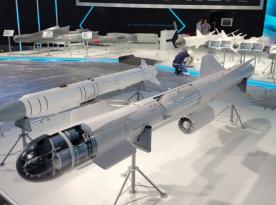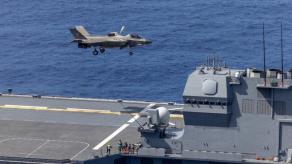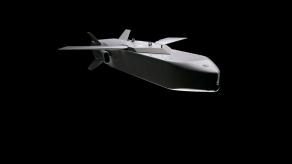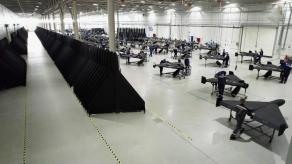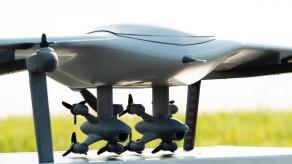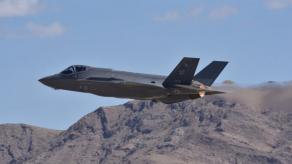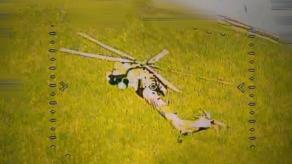The other day, russian drone developers who call themselves "Project Archangel," published a video featuring an anti-aircraft drone attached to a MiG-29 fighter. The original post stated that it was "an ideal way for placement" of their product, allowing to "deliver the interceptor directly to Kyiv or Lviv."
Despite the fact this drone was literally strapped to the fighter using plastic zip ties and a number of other features we'll discuss in a second, this "news" reached the Western community who started a serious discussion about the "threat" this know-how is posing.
Read more: Ukrainian Expert on How to Counter russian Rubicon's Naval Drones
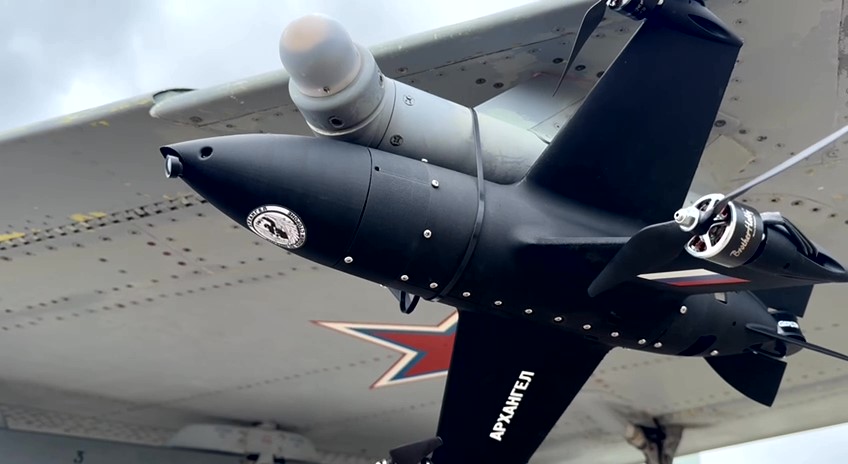
Among those who took note of this footage are reputable analysts and outlets. For example, The War Zone wrote a detailed article into this innovation, analyzing its technical features and various aspects.
Drawing attention to things like the crude zip-tie fastening and the drone blades that simply cannot withstand the oncoming airflow generated by a jet aircraft in flight, the journalist concludes that it was nothing more than a PR campaign.
Relevant for combat or just PR? Russia's Project Archangel is showing the "integration" of their CUAS interceptor drone with a fighter jet "...so that the interceptor can be "piloted" by a jet fighter crew." But the drone is zip tied to the plane, so... https://t.co/1cDyPcImGE pic.twitter.com/Oi3TIivs35 — Samuel Bendett (@sambendett) August 10, 2025
But Defense Express would like to clarify that this post did not show any sort of solution being developed to integrate an anti-aircraft drone into a fighter. And it wasn't PR either. The russians posted a humorous message, the real intent of which did not reach Western analysts.
This becomes clear immediately, if you just read the "plan" for mounting this drone onto a satellite, or the idea to teach drone operators how to control a fighter jet just so they could pilot the UAV straight from the cockpit, or question the feasibility of the drone reaching as far as "Kyiv or Lviv" using this method.
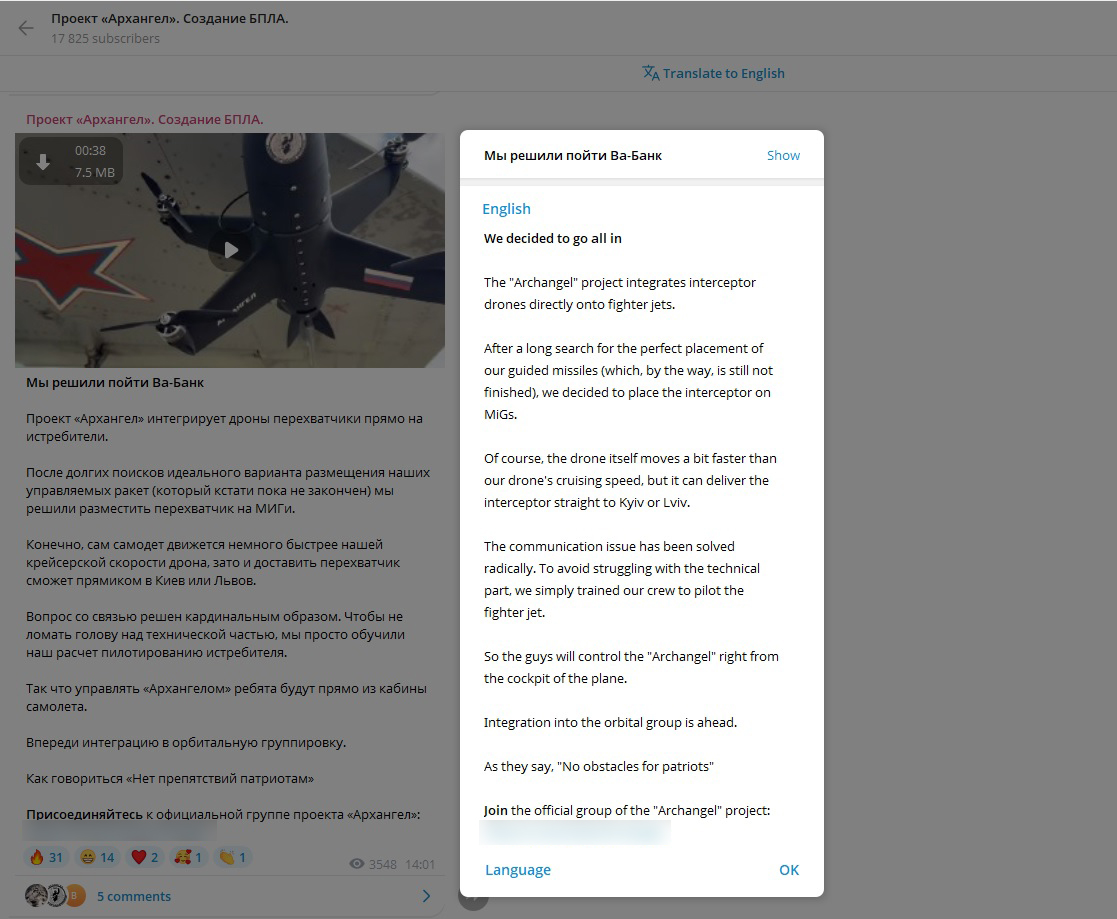
So, the main takeaway is rather comical but still concerning: any make-believe story from russian propaganda causes a stir in the West and is perscieved as a genuine threat. While russia does pose a threat on a global scale, one of its most favored tools is using misinformation to project imaginary power, force adversaries into hesitation when making decisions.
As for the matter at hand, it should be noted that integration of anti-air drones into the warplane arsenal is certainly possible, although not in a way described by the russian kulibins and not on a fighter jet but rather on light aircraft and helicopters.
Just a few days ago, we saw Ukrainian crop dusters repurposed for combat reach a new level, now armed with R-73 air-to-air missiles. Against this achievement, marrying anti-aircraft drones with military aircraft sounds pretty much realistic.
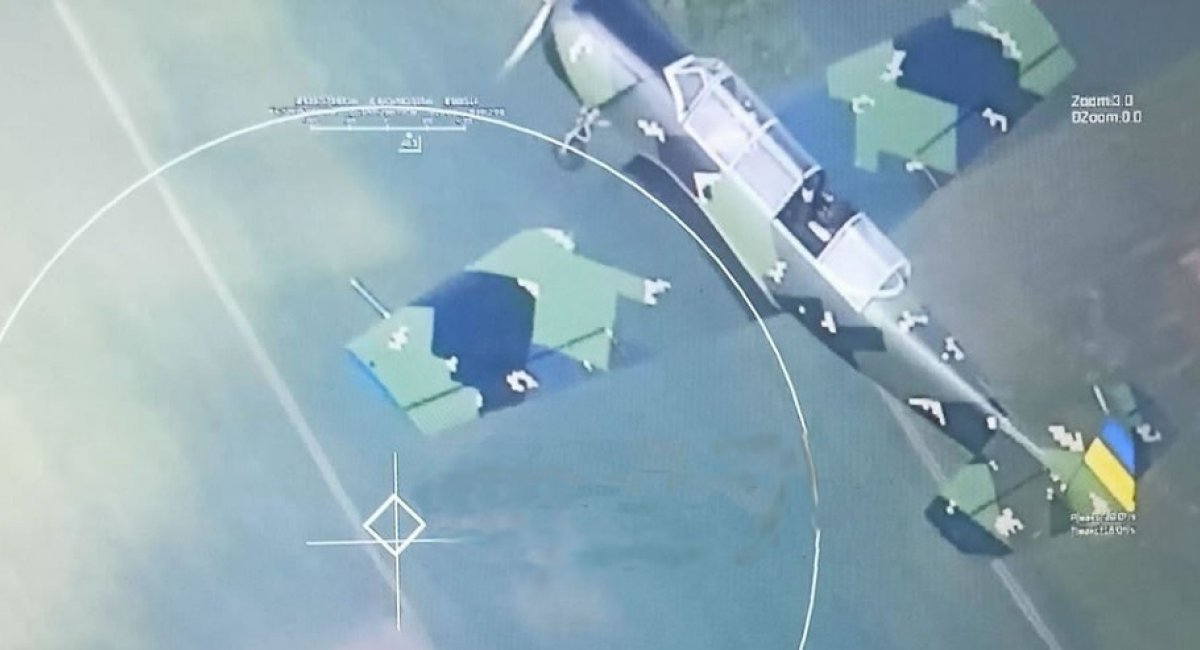
For example, a UAV could be launched off a Yak-52 trainer with the second crew member piloting the drone. It would require solving the problem of (properly) attaching the drone to its carrier and its safe release, compounded by the dilemma of choosing between relying on radio control or autonomous homing.
That is, if there's any need for a manned carrier at all. Because another, larger UAV may well take up the role of drone mothership and a signal repeater.
Read more: Ukrainian Combat "Crop Dusters" Reach a New Level — Now Armed with Missiles




